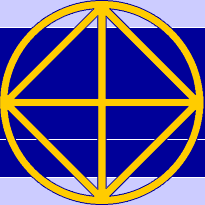Book Presentation
Narayana Kavacham
by Dr. E. Krishnamacharya

Many people who suffer from misfortune, diseases, obsessions, oppression, tension and the
onslaught of the social and planetary influences which stimulate the experience of his past deeds, take refuge
under the Kavacha (shield). Invariably they find stunning results both from the mundane and the spiritual point
of view. This is considered to be one among the most powerful formulae of the Mantras.
Kulapati
Ekkirala Krishnamacharya, known as Master EK among his followers, is the New Age teacher, healer
and yogi. He gave many spiritual practices to experience the One. “Narayana Kavacham” is one such
spark from his spiritual commentaries.
Kulapathi Book Trust, Visakhapatnam, India 2013-3
Sample:
ForewordPower runs as force along the lines of thought. This is one of the ancient most statements of the Seers. Based on this, the process of meditation is prescribed. Creating a thought-form is natural to the mind. If the thought matter is dedicated to God, then the circuit of the workings of nature is completed by man who forms the necessary link. The whole of the Science of Mantras is based on this fact. This forms a part of the Raja Yoga path. Think of God, and your limitations disappear. You have carved yourself out from God-matter and hence you have the riddle of your existence separately on the surface of God. When a divine thought form is proposed and produced in the mind in a spirit of dedication to God, then the total creation stands as an active God on the surface of the Supreme God. This process is carried out with the help of the utterance of some words and the reflection of their meanings. When used for this purpose the words are called Mantras. Using the Mantra as a shield which protects is a branch of the Science of Mantras. Such a creation is called Kavacham in Sanskrit and the term means a “Shield”. Here the Shield is made up of the sound vibrations, the utterance, the pulsation of breath which makes the utterance and the lines of thought which weave the meaning of the words.
This unique process which is first given in the Vedas is borrowed by the Seers of the subsequent works in Sanskrit. Veda Vyasa is among the most proficient and perfect Seers of the later age. He has composed the eighteen Puranas and the Great Epic, the Mahabharata. He has also compiled the Brahma Sutras and above all he has versified the eternal message of the Lord under the title “The Bhagavad Gita”. Above all he has rearranged the jumbled literature of the Vedas and it is beyond discussion that he is a past Master of all the branches of the ancient Wisdom. The Bhagavatha Purana is the sweetest and most sublime compilation of his works. It is composed in twelve books after the creative model of the twelve months of the solar year, which we call the twelve-syllabled name of the Lord. This book contains many unique passages which he has prescribed as Mantras. They are used for utterance, meditation and offering of the individual consciousness. The present sacred passage, Narayana Kavacham is among the sublime passages of Mantra dedicated to Narayana, the Lord of the Cosmic Consciousness. Each of the stanzas herein is called a Mantra as it is done in the case of the Vedic passages. Each is addressed to a God who is a manifestation of the Lord and who forms part of the body of the Cosmic Consciousness. This serves the purpose of the Raja Yoga practice of meditation wherein the mind is used to cause the merging of the mind on the surface of the background consciousness. This serves a double purpose:
One: It forms a shield of protection to the person who meditates and gradually gets his existence merged in the newly created body of the Mantra which is made up of sound, and meaning. The cumulative thought form which is regularly proposed by daily meditation will take the place of the mind, the life-force and the tissues of the one who meditates. Thus the disciple gets his parts illumined and lived by the newly created body of light and experience. This serves to save his very existence from the self-proposed limitations and difficulties. This protects him through his life incidents.
Two: In course of time, the individual existence is liberated into the Cosmic Existence of the Lord so that the riddle of self-conditioning is solved forever. The individual is replaced by God Experience which lives for him in his place. This is called the Grand Liberation.
Every incident in the life of the disciple is filled with God presence and hence he will face no difficulties and short comings of the hitherto mental existence. When a man experiencing great difficulties begins to practice this, he will be out of all his troubles within an incredibly short period of time. Many people who suffer from misfortune, diseases, obsessions, oppression, tension and the onslaught of the social and planetary influences which stimulate the experience of his past deeds, take refuge under the Kavacha. Invariably they find stunning results both from the mundane and the spiritual point of view. This is considered to be one among the most powerful formulae of the Mantras. This passage is given in the sixth book of the Bhagavatha Purana. The context runs as follows:
Indra, the King of Gods, had to face a fierce battle against a destructive giant called Trisira, the Viswarupa. Indra fought and fought when he gradually lost confidence. Then he was initiated into the Light of this Mantra, the Narayana Kavacha. He uttered it in meditation and identification. As a result he lost his identity of his mental weakness. The Lord walked with him through him and killed the giant Trisira. It is an allegory of the human consciousness which faces battle against the objective existence of the three persons (first person, second person and third person). The whole universe is made up of these three persons who work as the three-headed demon Trisira. The meditation of the Lord makes the demon merge on the background of the Light of all Subjectivity. The import of the allegory and the powers of the Mantra are far reaching beyond the imagination of the human mind. We propose to present the Mantra along with a rendering of the import in English and also the full directions to use the Mantra according to the tradition of the ancient seers.
E. Krishnamacharya

 Circle of Good Will
Circle of Good Will Contact
Contact
